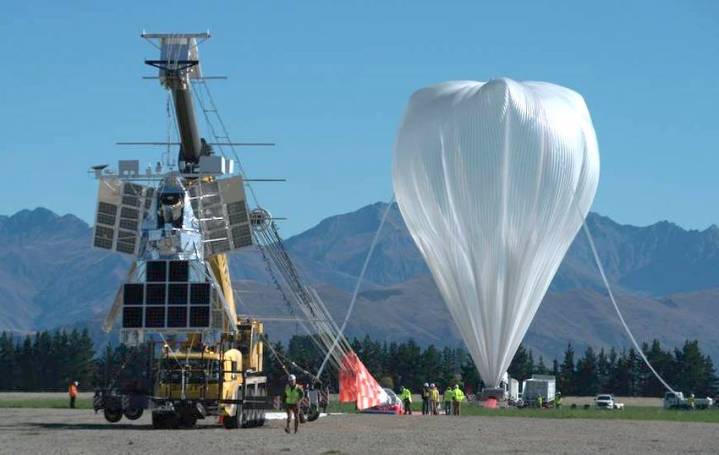
After just over a day in flight, NASA was forced to ditch one of its massive high-altitude science balloons in the ocean after a leak was detected.
The balloon, described by NASA as the size of a football stadium and designed to float at around 110,000 feet (33.5 kilometers), launched from Wānaka Airport in New Zealand on May 13. It carried the Extreme Universe Space Observatory 2 (EUSO-2), a mission from the University of Chicago that had hoped to learn more about the origin of ultra-high-energy cosmic-ray particles from beyond our galaxy as they penetrate Earth’s atmosphere.
But after around 36 hours in the sky, flight controllers learned that the balloon had developed a leak. Following a failed effort to troubleshoot the issue, the decision was made to terminate the flight over the Pacific Ocean on Sunday.
NASA said the termination procedure deployed a two-ton flight payload as an anchor to pull the entire balloon to the bottom of the ocean as quickly as possible. This helps to minimize any environmental impact by ensuring the balloon stays out of the area where most marine species are known to exist.
“This is an unfortunate end to the mission and we will investigate the cause to help us continue to improve the super pressure balloon technology,” Debbie Fairbrother, NASA’s Scientific Balloon Program chief, said in a release.
The launch was the second and final flight for NASA’s 2023 New Zealand balloon launch campaign after it sent another balloon skyward in April. Still in the air, this one is carrying Princeton University’s Super Pressure Balloon Imaging Telescope (SuperBIT) for gathering data on large galaxy clusters.
Balloon-based telescopes offer many advantages over other types, including potentially clearer images than those obtained from ground-based telescopes, and more cost-effective missions compared to those involving rockets.
Keen to avoid any confusion over the identity and purpose of its balloon flights following the discovery earlier this year of apparent spy balloons operated by China, NASA invites the public to follow its missions as they travel through the Southern Hemisphere’s mid-latitudes.


